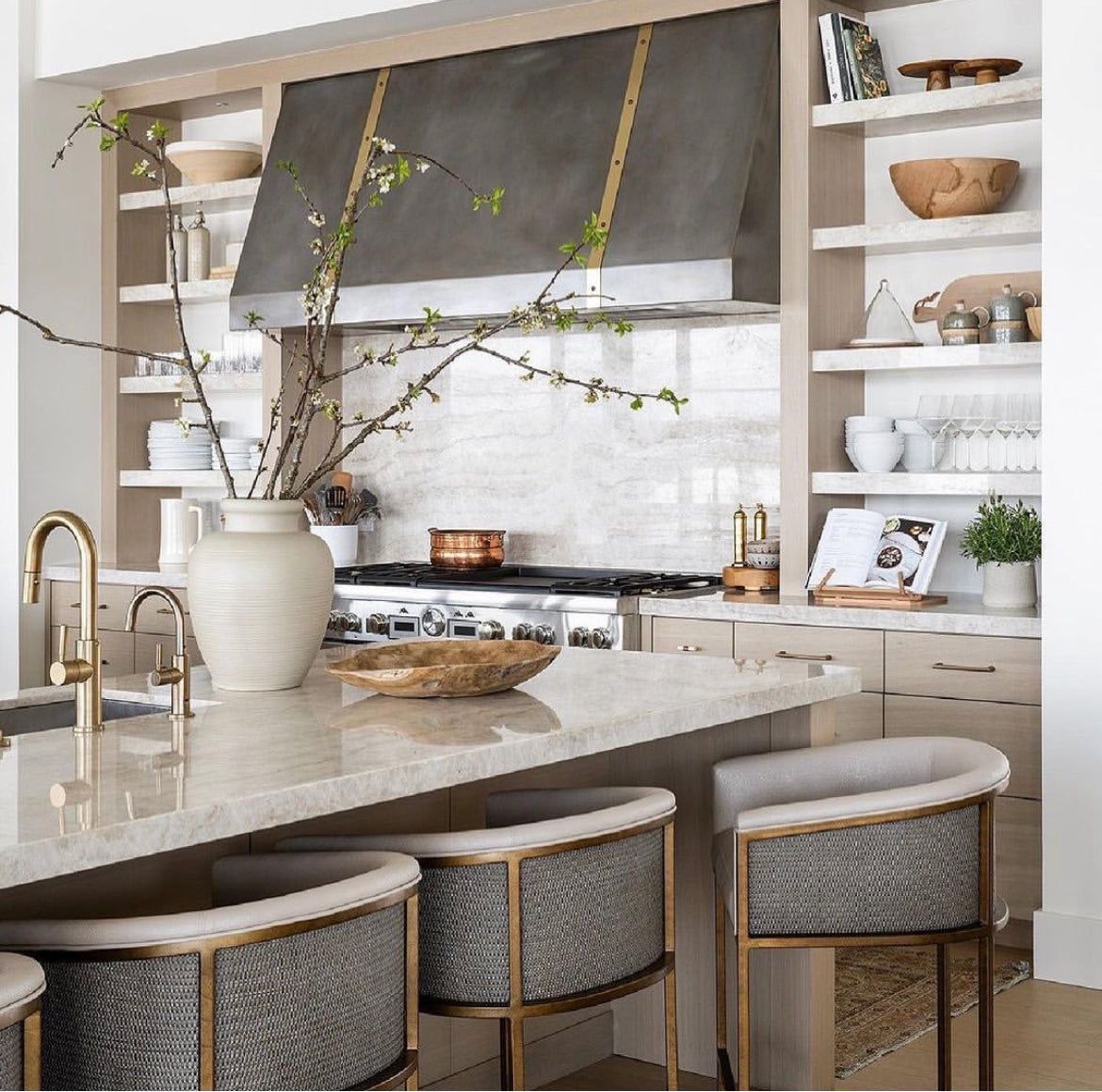Metal Hoods & Mixing Metals
Why I partnered With Stoll Industries
Incorporating Metal into kitchen design has been trending for a while now and I think it’s here to stay! Mixing metals in the kitchen is a great way to add an interesting and contemporary look to your home. Today I am going to talk about why I partnered with Stoll Industries and also talk about some of my practices when I mix metals.
5 Compelling Reasons to Mix Metals in the Kitchen
- 1. To Create a Strong Focal Point
- 2. To Achieve a Modern Look
- 3. To Establish a Sense of Age
- 4. To Create a Worldly Layered Look
- 5. To Curate a Collected Feel
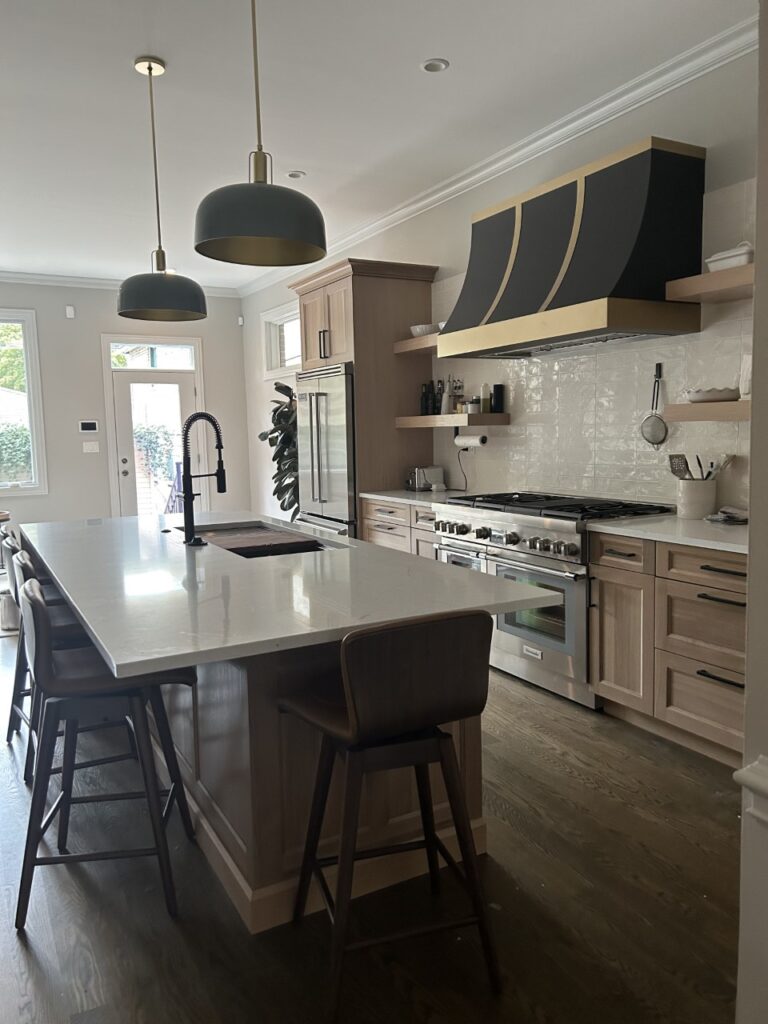
Why I Chose to Work with Stoll Industries
Stoll Industries is a family-owned business out of South Carolina, and they have been in the metal making business for over 50 years. They have wonderful premade designs that you can use to start with and add your own dimensions and finishes too; but they also have the flexibility to do hoods designed from my cad drawings. They have so many wonderful finishes to choose from and work with and their lead-times are only 4-6 weeks. They are competitively priced.
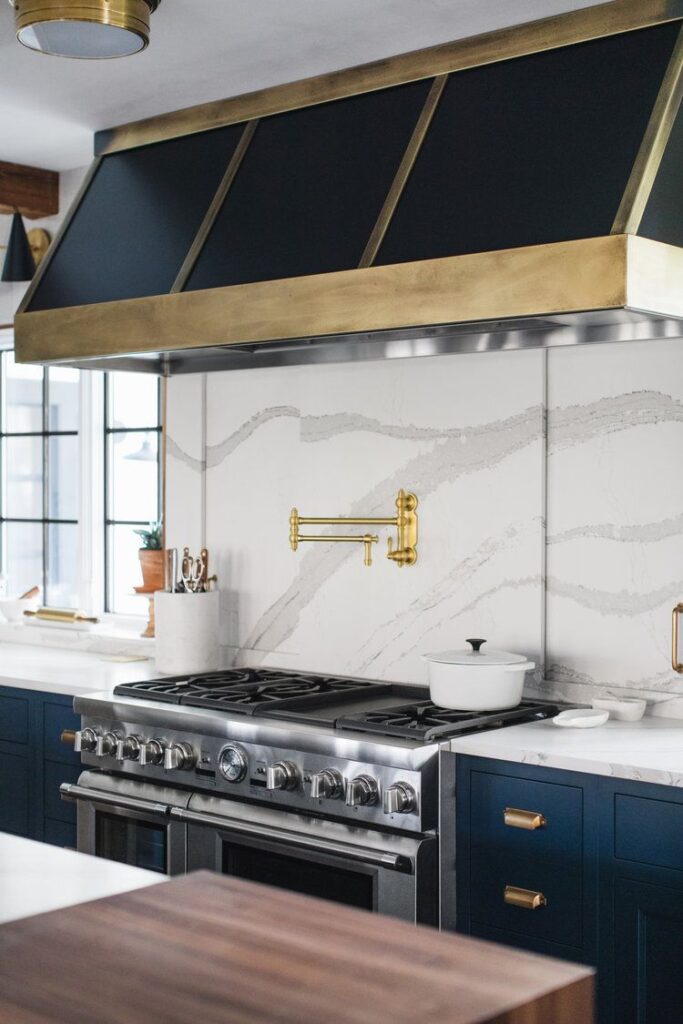
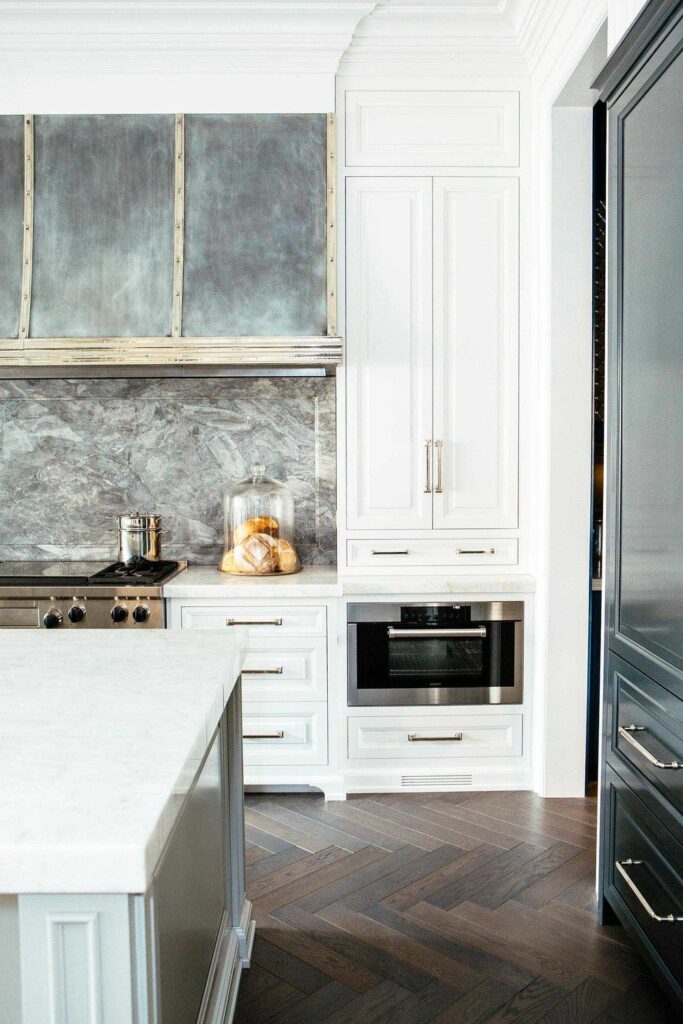
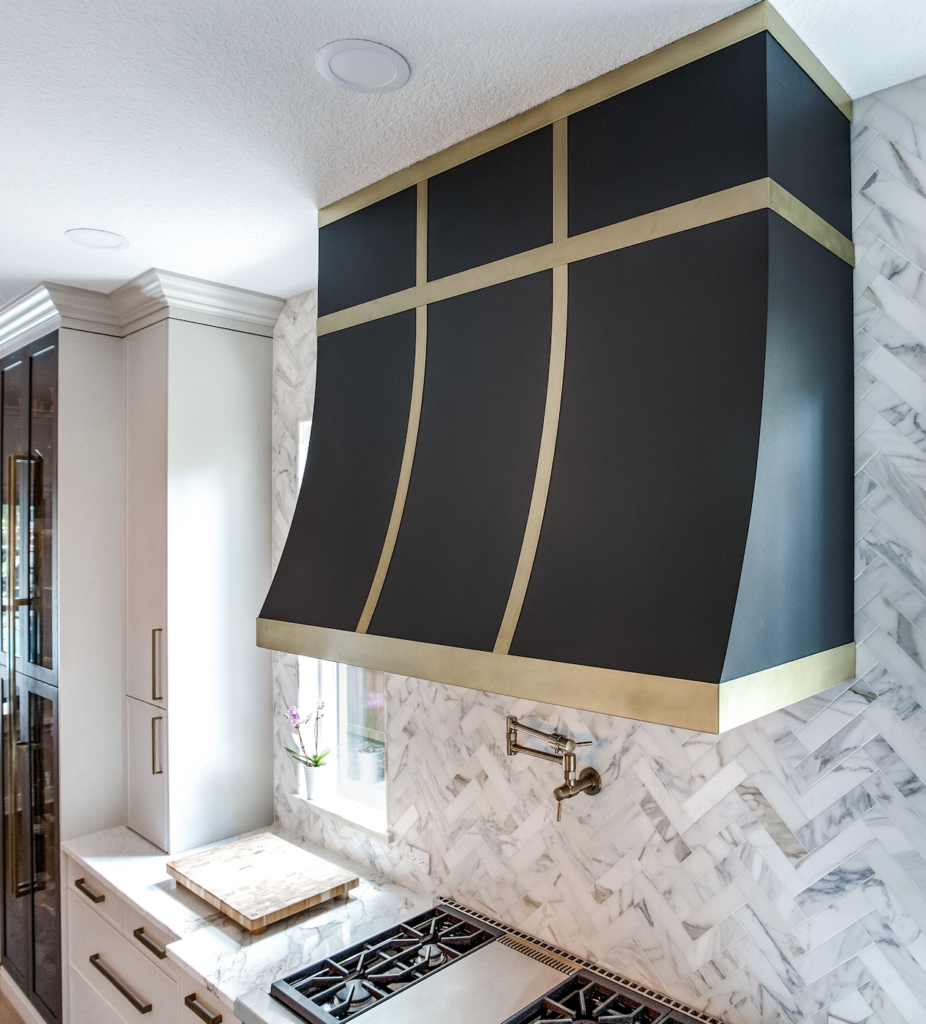
Is It Okay to Mix Metals in a Kitchen?
Metals come in warm and cool tones. Warm metals include brass, gold, copper, and oil-rubbed bronze. Cool metals include chrome, polished nickel, and brushed nickel.
Black is considered either a cool-toned metal or a neutral and makes a great second or third metal to balance out your mix.
This lovely warm wood kitchen island is enhanced by detailing on the cabinet doors as well as a mix of brass and black (or bronze) metal finishes.
If you want to mix metals in the kitchen, I recommend mixing cool metals with warm metals to create a nice, eye-pleasing balance.
In general, I wouldn’t mix two metals in the same family, such as nickel and chrome, unless they’re far apart in the space or you’re also adding a warm-toned metal to the mix.
When mixing metals, some designers recommend matching the sheen on your fixtures; i.e., if you’re using polished nickel, you would also choose polished brass, rather than brushed.
However, most interior designers agree you can safely mix shiny with matte–as well as warm with cool. I do, however, recommend placing your different finishes next to each other before they’re installed to make sure you’re creating a cohesive mix.

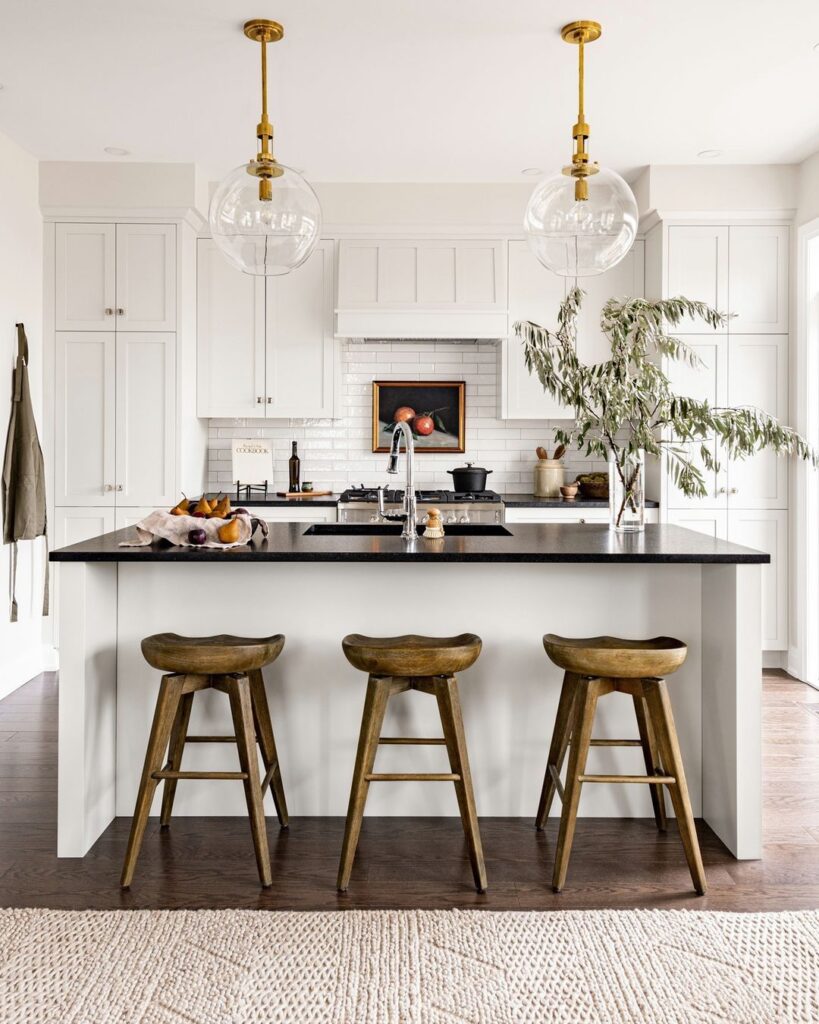
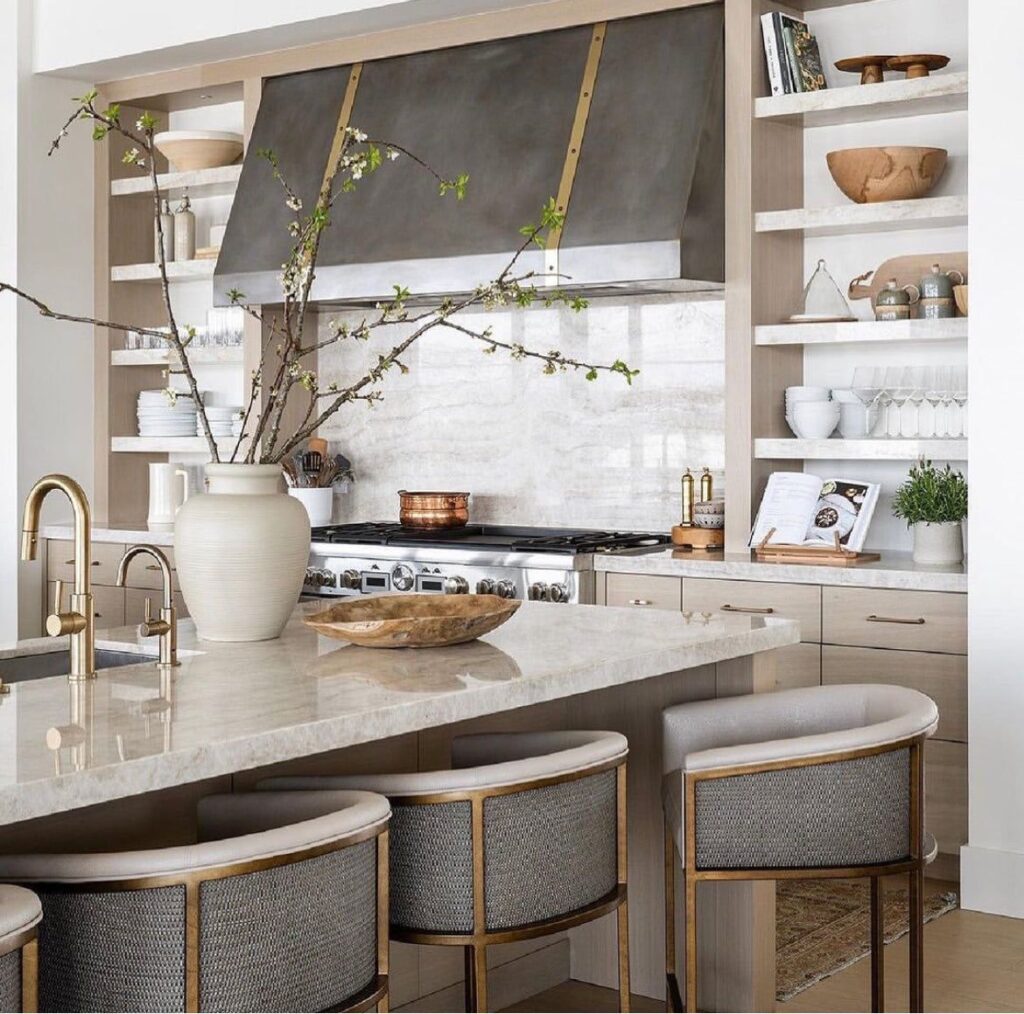
Can You Mix Chrome and Brass Fixtures in a Kitchen?
It’s fine to mix brass and chrome fixtures together, as well as brass and nickel. As the two most popular metallic shades, gold and silver (or brass and chrome) go well together and can be combined to add stylish contrast in the kitchen.
This elegant kitchen design features black framed windows, a chrome faucet, and brass Pendants.
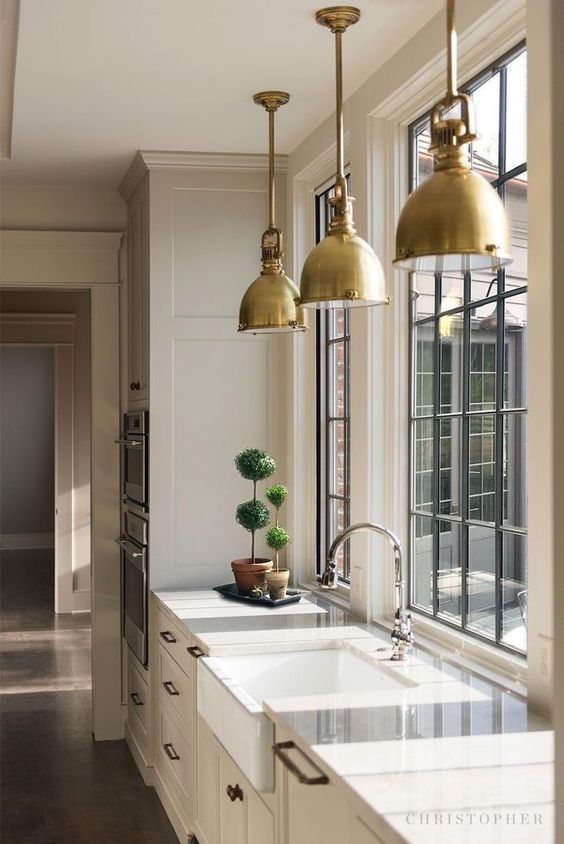
Are Stainless Steel Appliances Considered a Metal Finish in the Kitchen?
If you have an abundance of stainless steel appliances in your kitchen, as most people do, it’s a good idea to consider stainless steel as one of your metal finishes. As I mentioned above, you should try not to mix more than three metals in one space. Ideally, then, if you have stainless steel appliances, you would incorporate a maximum of two other metal finishes in your kitchen. However, if one of your metal finishes is brushed nickel, it could be considered the same as brushed stainless steel, since the two finishes are so similar.
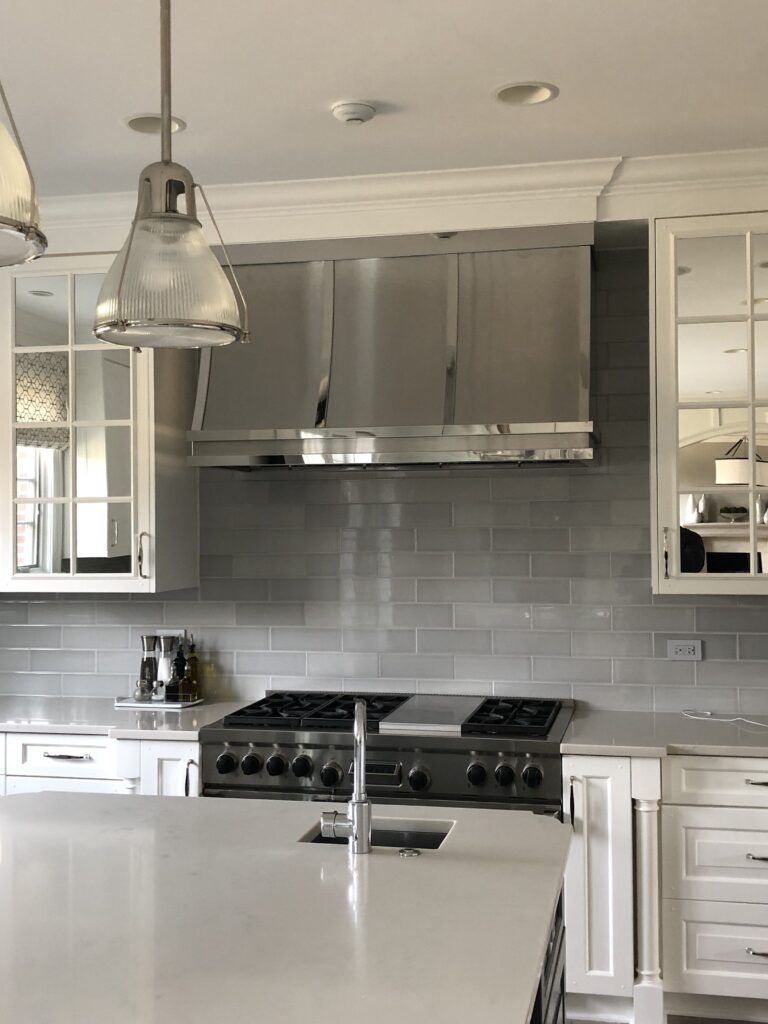
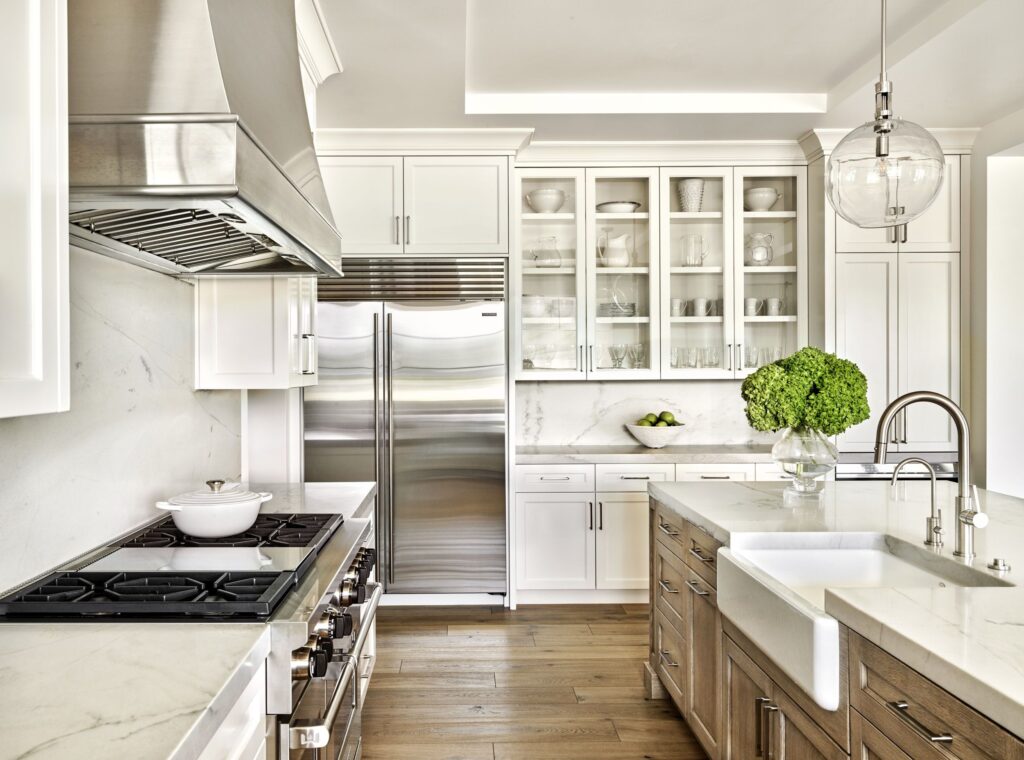
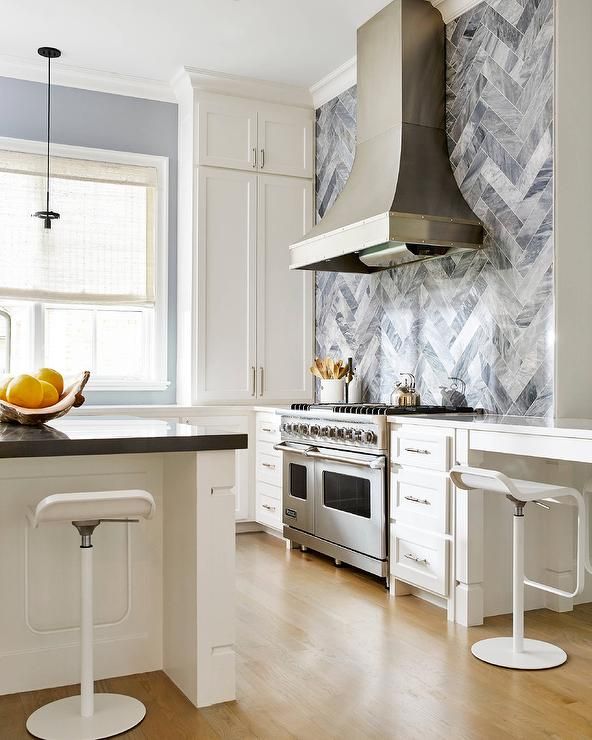
Are Gold and Brass Finishes Still in Style?
While chrome kitchen fixtures are trending for 2023, brass is still in style, adding a luxurious touch to any room. Brass works well in both warm and white spaces as well as kitchens with darker tones. I recommend using brass when you want your eye to be drawn to the fixture or metal finish.
These beautiful kitchens are great example of how striking brass metal finishes can be when paired with white cabinets.
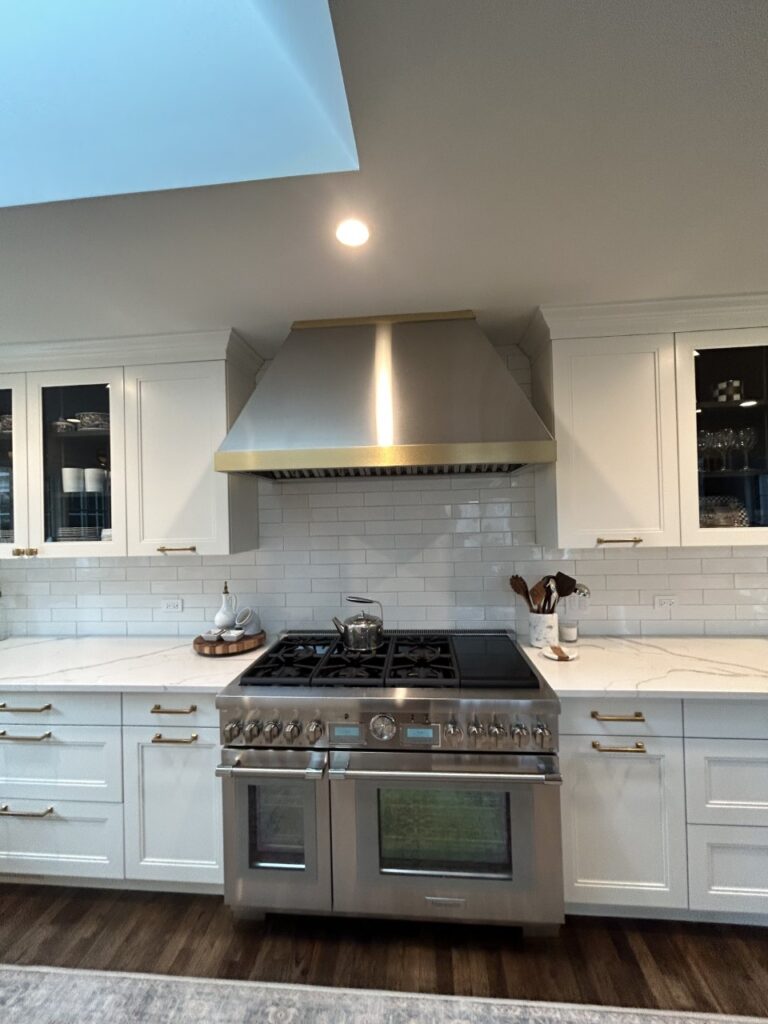
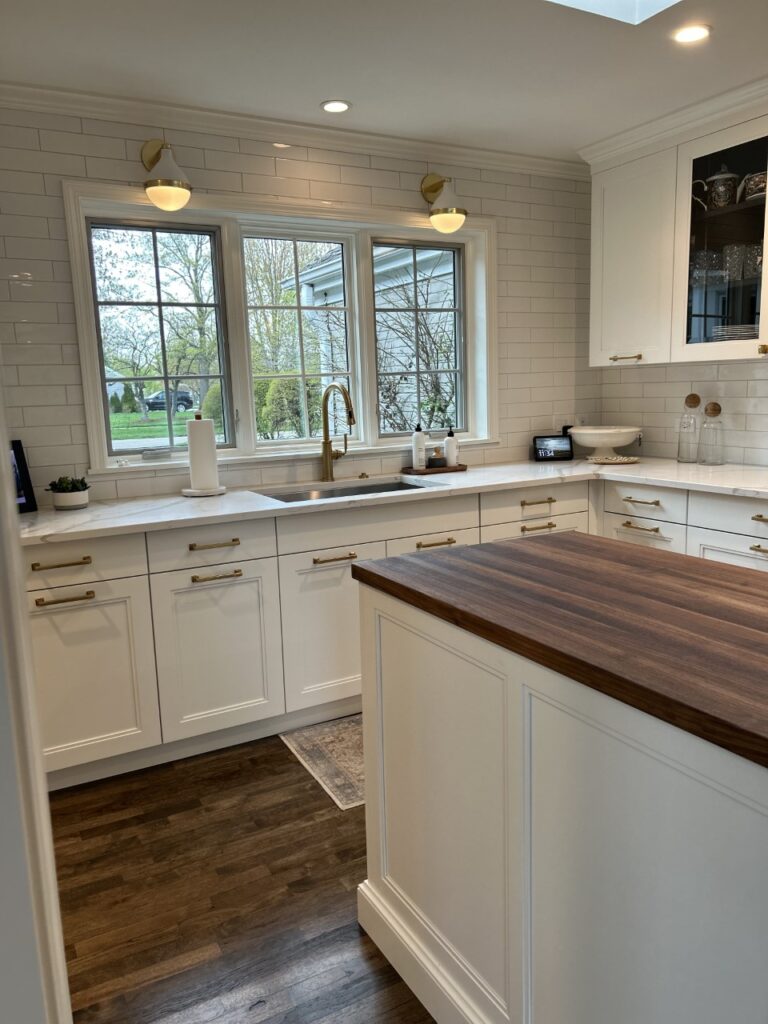
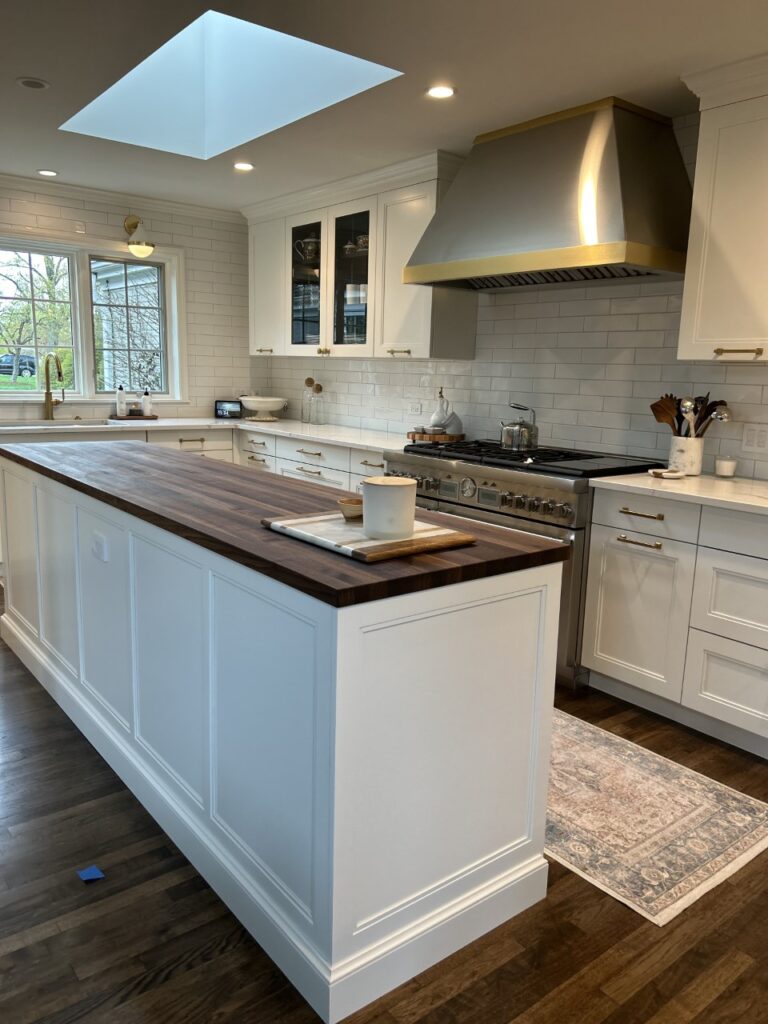
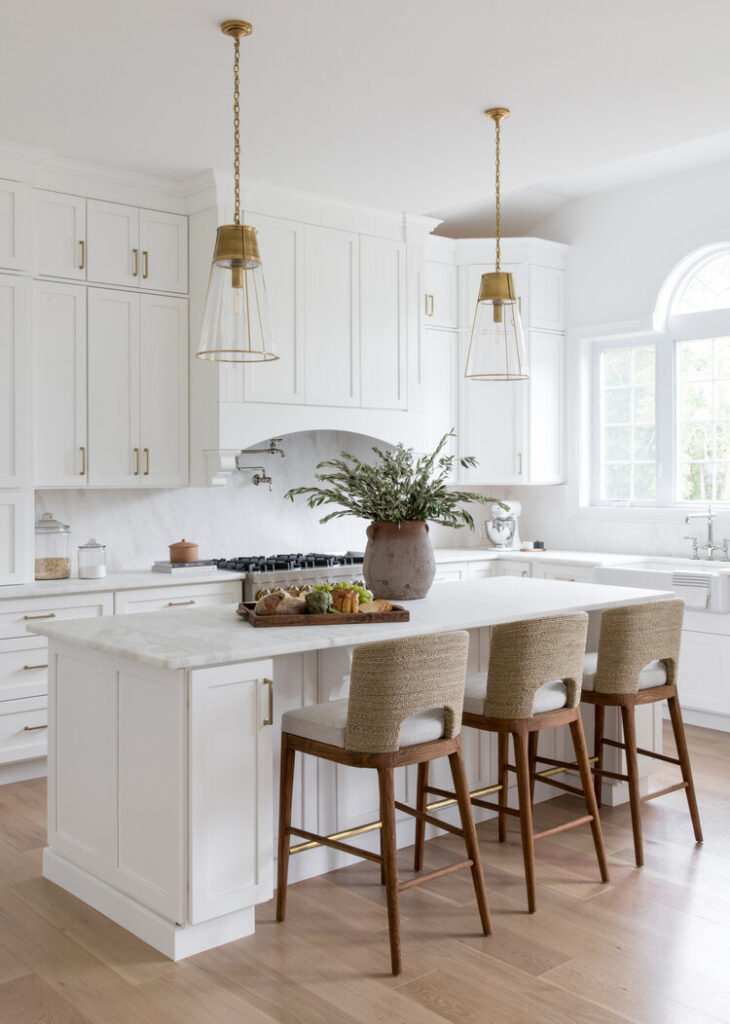
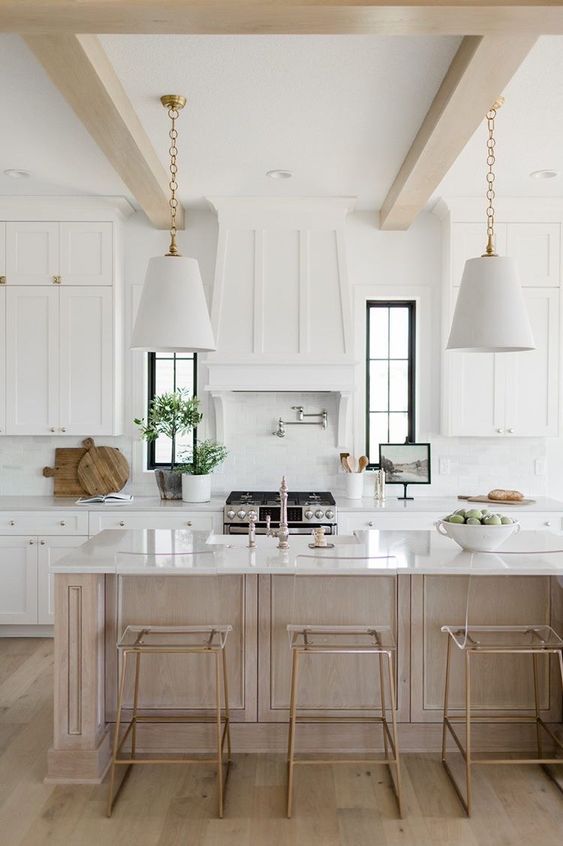

Should Kitchen Cabinet Hardware Match the Faucet?
Traditionally, kitchen cabinet hardware was chosen to match the faucet finish, but that’s no longer necessary. Although your cabinet hardware doesn’t have to match your faucet, I do think it’s a good idea to repeat the cabinet hardware finish elsewhere in the room–perhaps in the lighting or decor. This helps tie the room together and create a cohesive look.
